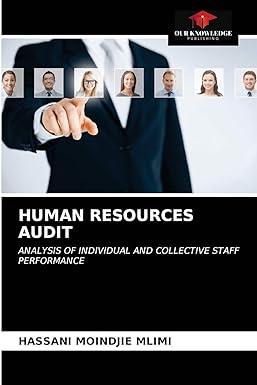Question
1. Of the following, select the attribute that would be the best primary key in an inventory table. a. Item NAME b. Item NUMBER c.
1. Of the following, select the attribute that would be the best primary key in an inventory table.
a. Item NAME
b. Item NUMBER
c. Item COST
d. Item LOCATION
e. ITEM SUPPLIER
2. The advantages to using a partitioned database approach include all of the following EXCEPT that
a. The possibility for the deadlock phenomenon is reduced.
b. user control is increased.
c. transaction processing time is decreased.
d. the potential for the wide-scale disaster is reduced.
e. these are all advantages of the partitioned databases.
3. A partial dependency
a. is the result of simultaneous user requests for the same data in a partitioned database environment.
b. is a name given to one of the three anomalies that result from unnormalized database tables.
c. can exist only in a table with a composite primary key.
d. may exists kin tables that are normalized at the 2NF level.
4. Repeating group data
a. occur as a form of data redundancy common to replicated databases in a distributed database environment.
b. refer to one of the three anomalies that result from unnormalized database tables.
c. can exists only in a table with a composite primary key.
d. cannot exist in tables that are normalized at the 2NF level.
e. are none of the above.
5. What term describes the following data items: part number, description, quantity on hand, and reorder point?
a. Attributes
b.Relations
c. Entities
d. Occurrences
6. One of the first steps in the creation of a relational database is to
a. perform view integration
b. normalize the tables
c. create a data model for the entities in the system
d. identity attributes and add foreign keys
e. construct the physical user view using SQL.
7. Entities in a data model
a. may contain zero or many occurrences.
B.are represented as verbs in an ER diagram.
c. may represent both physical assets and intangible phenomena
d. are often defined by common attributes that also define other entities
e. are unique to a specific user view.
8. Which of the following is least likely to be an attribute of an employee table in a normalized database?
a. Employee name
b. Employee address
c. Employee number
d. Employee supervisor
Step by Step Solution
There are 3 Steps involved in it
Step: 1

Get Instant Access to Expert-Tailored Solutions
See step-by-step solutions with expert insights and AI powered tools for academic success
Step: 2

Step: 3

Ace Your Homework with AI
Get the answers you need in no time with our AI-driven, step-by-step assistance
Get Started


